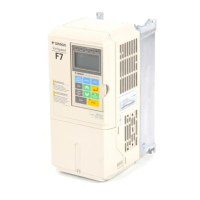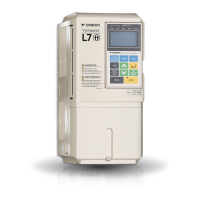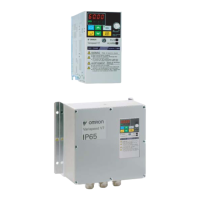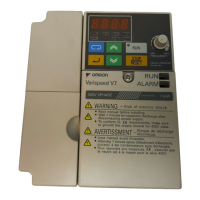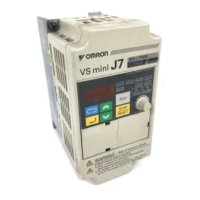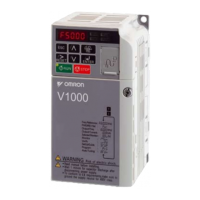Troubleshooting
7-17
The frequency reference is too low.
If the frequency reference is set below the frequency set in E1-09 (Minimum Output Frequency), the Inverter
will not operate. Raise the frequency reference to at least the minimum output frequency.
The motor stops during acceleration or when a load is connected.
The load may be too heavy. The Inverter has a stall prevention function and an automatic torque boost func-
tion (Torque Compensation), but the motor has a limited responsiveness which might be overloaded if acceler-
ation is too rapid or if the load is too heavy. Lengthen the acceleration time or reduce the load. Also consider
increasing the motor and/or Inverter capacity.
The motor rotates in one direction only.
Reverse run is disabled. If b1-04 (Prohibition of reverse operation) is set to 1 or 3(reverse run prohibited), the
Inverter will not accept reverse run commands. To use both forward and reverse operation, set b1-04 to 0 or 2.
If the Direction of the Motor Rotation is Reversed
If the motor rotates in the wrong direction, the motor output wiring may be incorrect. When the Inverter oper-
ates in the forward direction, the forward direction of the motor will depend on the manufacturer and the
motor type, so be sure to check the motor specification
The direction of the motor rotation can be reversed by switching two wires among U, V, and W. If using an
encoder, the polarity will also have to be switched. Also parameter b1-04 can be used to change the rotational
direction.
If the Motor Does Not Put Out Torque or If Acceleration is Slow
The stall prevention level during acceleration is too low.
If the value set for L3-02 (Stall Prevention Level during Acceleration) is too low, the acceleration time will be
very long. Check to be sure that the set value is suitable.
The stall prevention level during run is too low.
If the value set for L3-06 (Stall Prevention Level during Run) is too low, the speed may drop already at low
output torque. Check to be sure that the set value is suitable.
If the Motor Operates at Higher Speed than the Frequency Reference
The analog frequency reference bias or gain setting is wrong.
The frequency reference bias or gain set in parameter H3-03 or H3-02 influence the frequency reference.
Check to be sure that these set values are suitable.
PI control is enabled.
If the PI control is enabled (b5-01 = 1 or 2), the Inverter output frequency will change to regulate the process
variable to the desired set point. The PID can command a speed up to Maximum Output Frequency (E1-04)
even though the reference is much lower.
